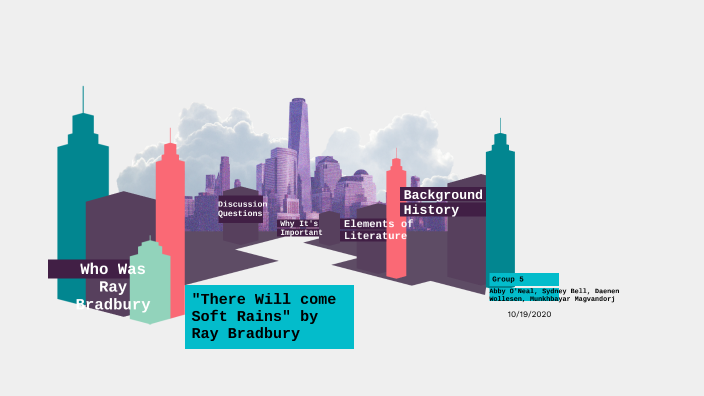

Many of his early stories were published in the legendary pulp magazine Weird Tales. While expanding his connections in the literary world of science fiction, he worked as a newsboy, and several years later, without the benefit of a college education, he became a full-time writer and was soon winning awards for his short fiction. The following year he began publishing a science fiction magazine called Futuria Fantasia with a couple of his friends. Bradbury graduated from Los Angeles High School in 1938. During the depression, his father, a power lineman, moved the family to Los Angeles in his search for work. Ray Bradbury was born August 22, 1920, in Waukegan, Illinois, where he spent his early years.

The story, which happens in the future but takes its title from a poem by a nineteenth-century writer, is a prime example of how science fiction literature can encompass moral and philosophical concerns. In a further moral lesson, Bradbury shows how human technology is able to withstand the demise of its maker, yet is ultimately destroyed by nature, a force which prevails over all others. The atomic bombings of Nagasaki and Hiroshima, Japan, were recent memories in 1951, and many readers and critics found Bradbury’s images of a desolate planet haunting and cautionary. The central irony of the story is the fact that humans have been destroyed rather than saved by their own technology. Written in an era in which many people were concerned about the devastating effects of nuclear weapons, the story depicts a world in which human beings have been destroyed by nuclear force. Also known as “August 2026: There Will Come Soft Rains,” the story was written and published in Bradbury’s highly acclaimed collection of stories, The Martian Chronicles, in 1951. “There Will Come Soft Rains” is one of Ray Bradbury’s most famous stories.


 0 kommentar(er)
0 kommentar(er)
